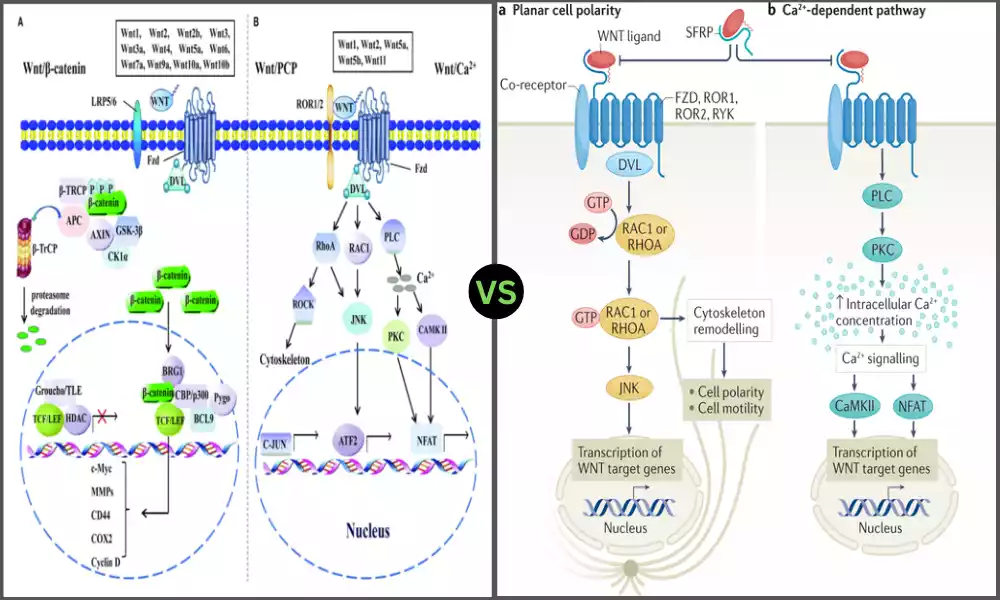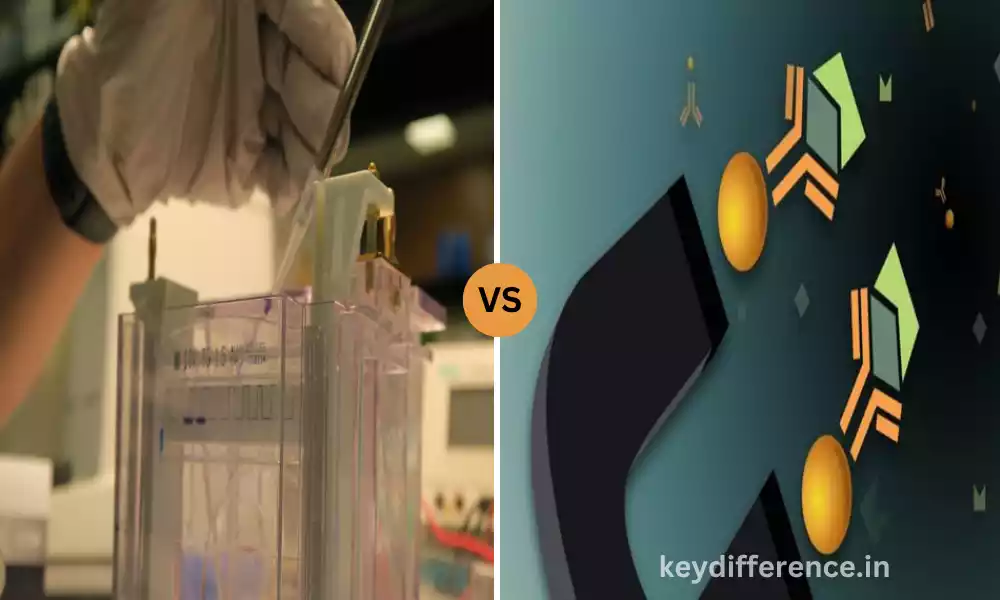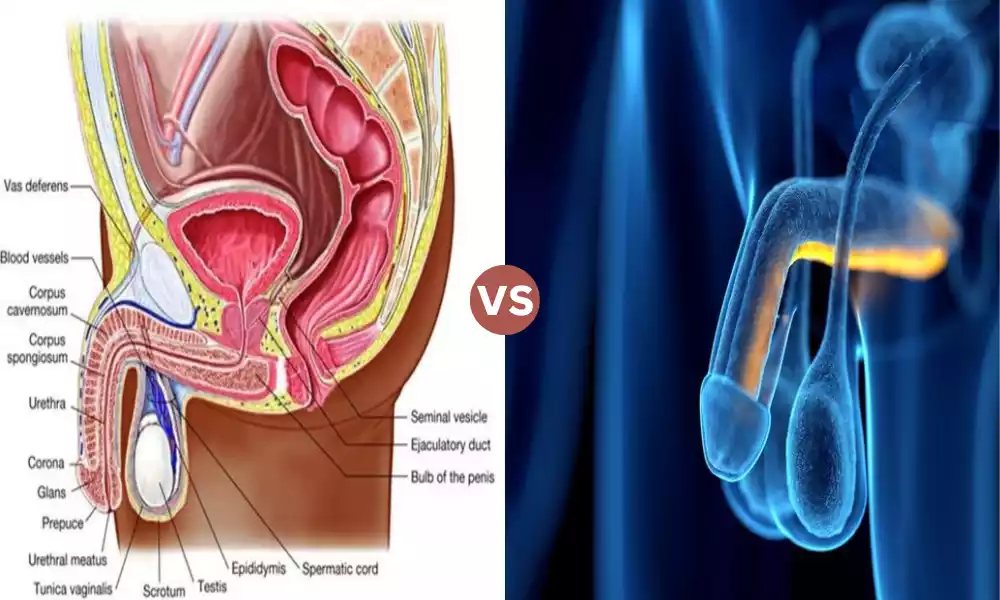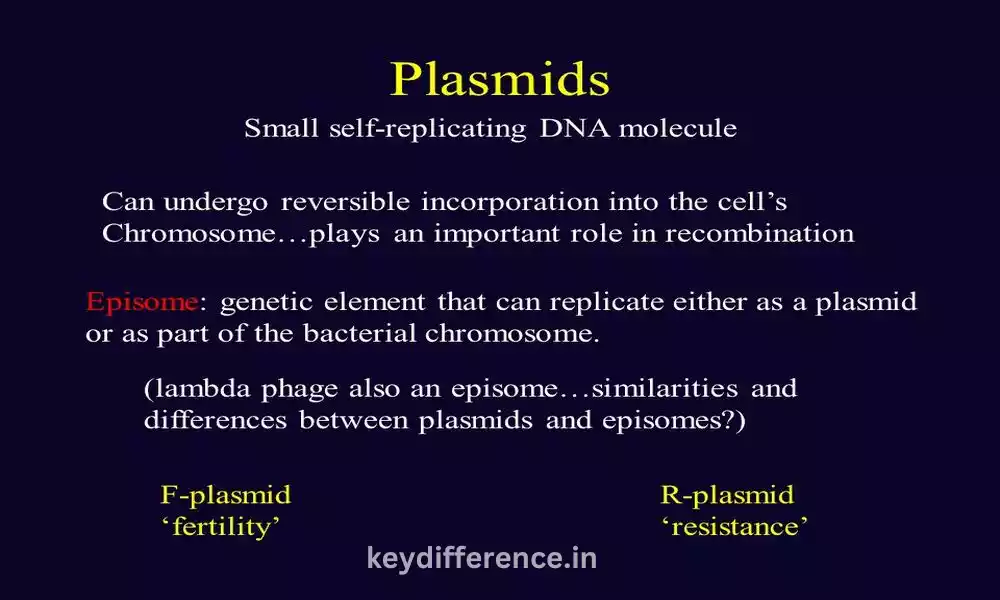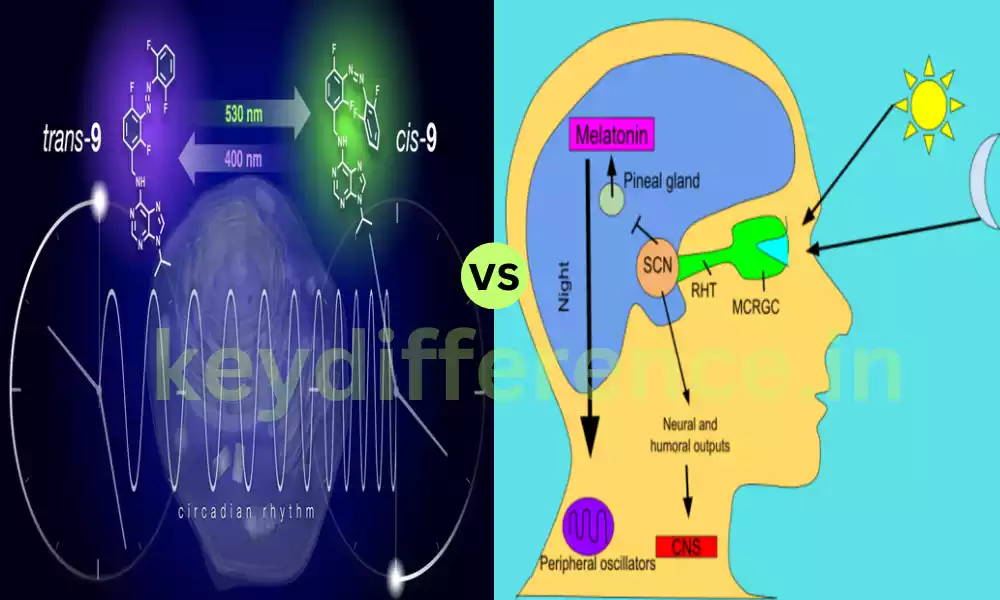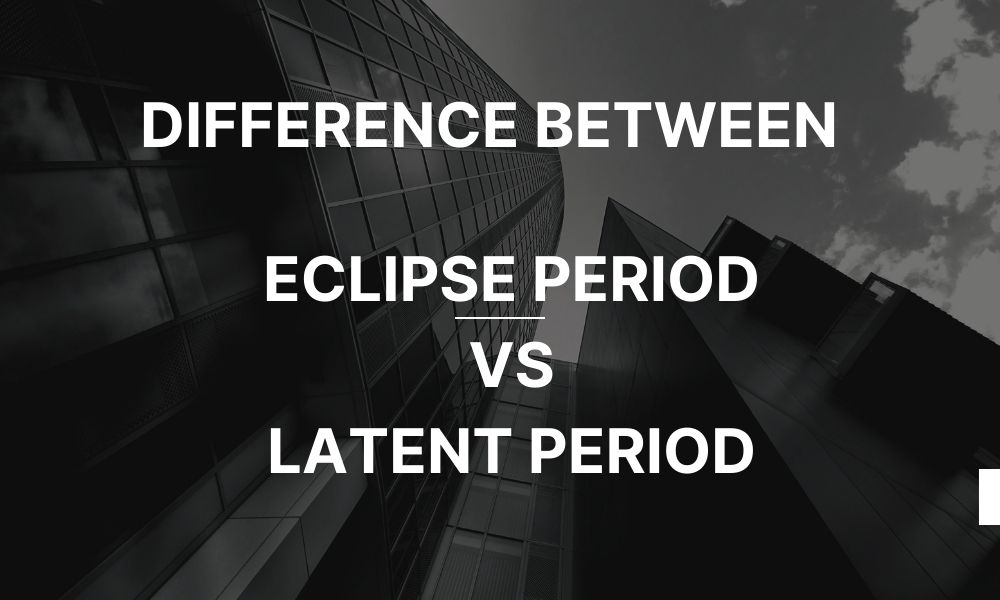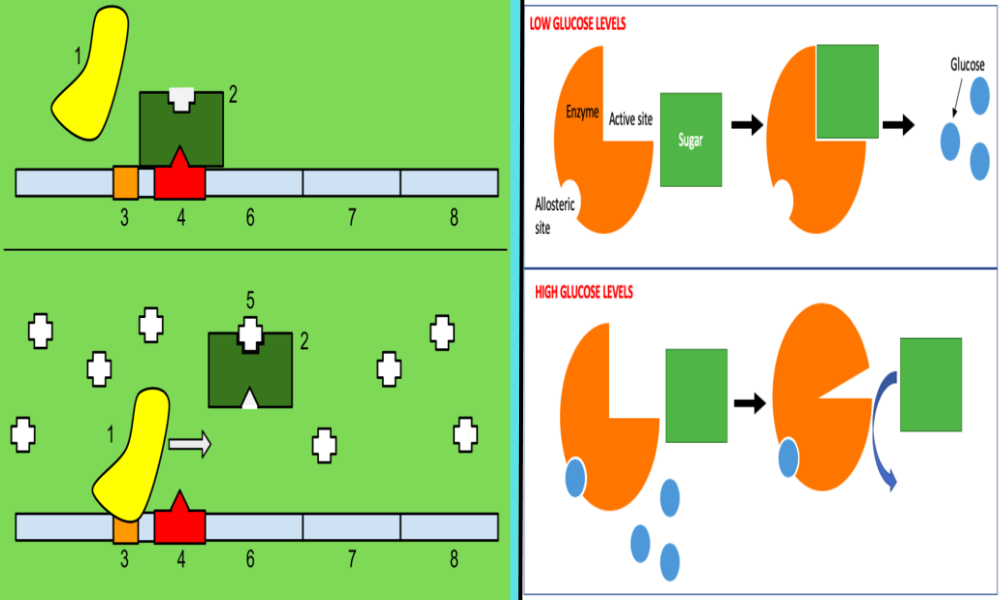WNT signaling pathways are vitally important biological networks that facilitate embryonic development, tissue homeostasis, and disease progression. Within this intricate system are two major branches Canonical and Noncanonical WNT Pathway – each playing distinct roles in controlling cell behavior.
Attempts to highlight their differences while providing insight into their mechanisms, physiological relevance, and significance in health and disease.
What is Canonical WNT Pathway?
The Canonical WNT Pathway, also called the WNT/b-catenin pathway is one of two major branches of the WNT Signaling Pathway. It plays an essential function in controlling a variety of cell processes, such as embryonic development, regeneration of tissues as well and the maintenance of the homeostasis of tissues in adults.
Here are the most important elements and features in this Canonical WNT Pathway:
- WNT Ligands: The pathway is initiated through the binding of WNT protein to cell receptors on the cell’s surface. WNT ligands, which are glycoproteins secreted by cells, that function as signaling molecules.
- Frizzled (FZD) Receptors: WNT ligands are bound to Frizzled receptors located on the membrane of cells. Frizzled receptors belong to a group of transmembrane proteins that serve as the principal cell membrane receptors of WNT ligands.
- LRP5/6 and Co-Receptors: In canonical signaling, WNT interaction with Frizzled receptors causes activation and recruitment of LRP5 or LRP6 co-receptors. The co-receptor complex is crucial in activating the pathway.
- Beta-Catenin: The activation in the Canonical WNT Pathway causes stable and accumulating beta-catenin into the cell cytoplasm. If there is no WNT signaling beta-catenin can be targeted for destruction via”the destruction complex. “destruction complex.”
- Destruction Complex: The destructor complex consists of proteins, such as APC (adenomatous polyposis colli), GSK3b (glycogen synthase kinase 3 beta), and Axin. Its function is to phosphorylate beta-catenin making it more prone to proteasomal degradation.
- Nuclear Translocation: When the Canonical WNT Pathway gets activated, beta-catenin is accumulated in the cytoplasm, and later moves into the nucleus.
- Gene Expression: In the nucleus, beta-catenin functions as a coactivator of transcription factors such as TCF/LEF. This complex triggers the expression of targeted genes, including the c-Myc gene and Cyclin D1 that are essential for cell development and differentiation.
It is believed that the Canonical WNT Pathway is highly preserved and plays an important role in the embryonic development process, specifically in the development of different organs and tissues.
It also plays a role in the regeneration of tissues in adulthood. This pathway’s dysregulation is linked with numerous diseases like cancer. uncontrolled activation may result in uncontrolled growth of cells and expansion.
The understanding of how to understand the Canonical WNT Pathway is crucial in both basic biology research and therapeutic research since the modulation of this pathway could be significant in the treatment of ailments associated with cell proliferation and the development of tissues.

What is the Noncanonical WNT Pathway?
It is the Noncanonical WNT Pathway Also called The noncanonical WNT signaling pathway is one of two main branches of the WNT signaling pathway that is in contrast to the Canonical WNT Pathway.
It includes a wide array of signaling pathways that are activated by WNT ligands, but don’t involve stabilization of beta-catenin or its subsequent activation of TCF/LEF dependent genes, as is a characteristic of this pathway. Canonical WNT Pathway.
These are the main aspects and parts of the noncanonical WNT Pathway:
- WNT Ligands: Similar to those of the Canonical WNT Pathway but noncanonical WNT signaling starts with binding of WNT ligands receptors on cell surfaces.
- Frizzled (FZD) Receptors: WNT ligands are able to interact with the Frizzled receptors within the noncanonical pathway of WNT which is similar to the Canonical pathway.
- Diverse downstream signaling pathways: In contrast to those of the Canonical path, which mostly involves the stabilization of beta-catenin as well as gene transcription, the noncanonical WNT Pathway triggers several downstream signaling pathways. Two of the most well-known branches of the Noncanonical WNT Pathway are:
- planar cell polarity (PCP) The pathway: Signaling via PCP regulates the polarity and orientation of cells in tissues. It is crucial when it comes to processes such as the morphogenesis of tissues, cell movement, and organ development.
- C2+/WNT Pathway: This pathway causes increased intracellular calcium levels after the binding of WNT-binding ligands. It plays a role in various processes of cell adhesion, movement, and the axon’s guidance.
- Disheveled (DVL) Protein: Disheveled is an important intracellular protein that is a major player in generating the noncanonical WNT signal. DVL interacts with a variety of parts of the pathway according to the branch that is activated.
- physiological roles: The noncanonical WNT Pathway is involved in a variety of biological processes, such as the development of embryos (especially tissue patterning) and neural development. It also plays a role in cell migration, tissue regeneration, and the immune response.
- Regulation as well as Crosstalk: The noncanonical and Canonical WNT pathways may interplay and influence each other in specific contexts and the crosstalk between these pathways may affect cell responses.
- Dysregulation and disease: Dysregulation of the Noncanonical WNT Pathway is implicated in diverse diseases which include neurodevelopmental disorders as well as certain kinds of cancer.
The Noncanonical Pathway is a variety of signaling pathways triggered by WNT ligands, which do not result in beta-catenin stabilization or transcription dependent on TCF/LEF. These pathways instead play a role in functions such as cell polarity migration and tissue patterning.
They contribute to the complex nature of WNT communication and vital role in the development of disease.
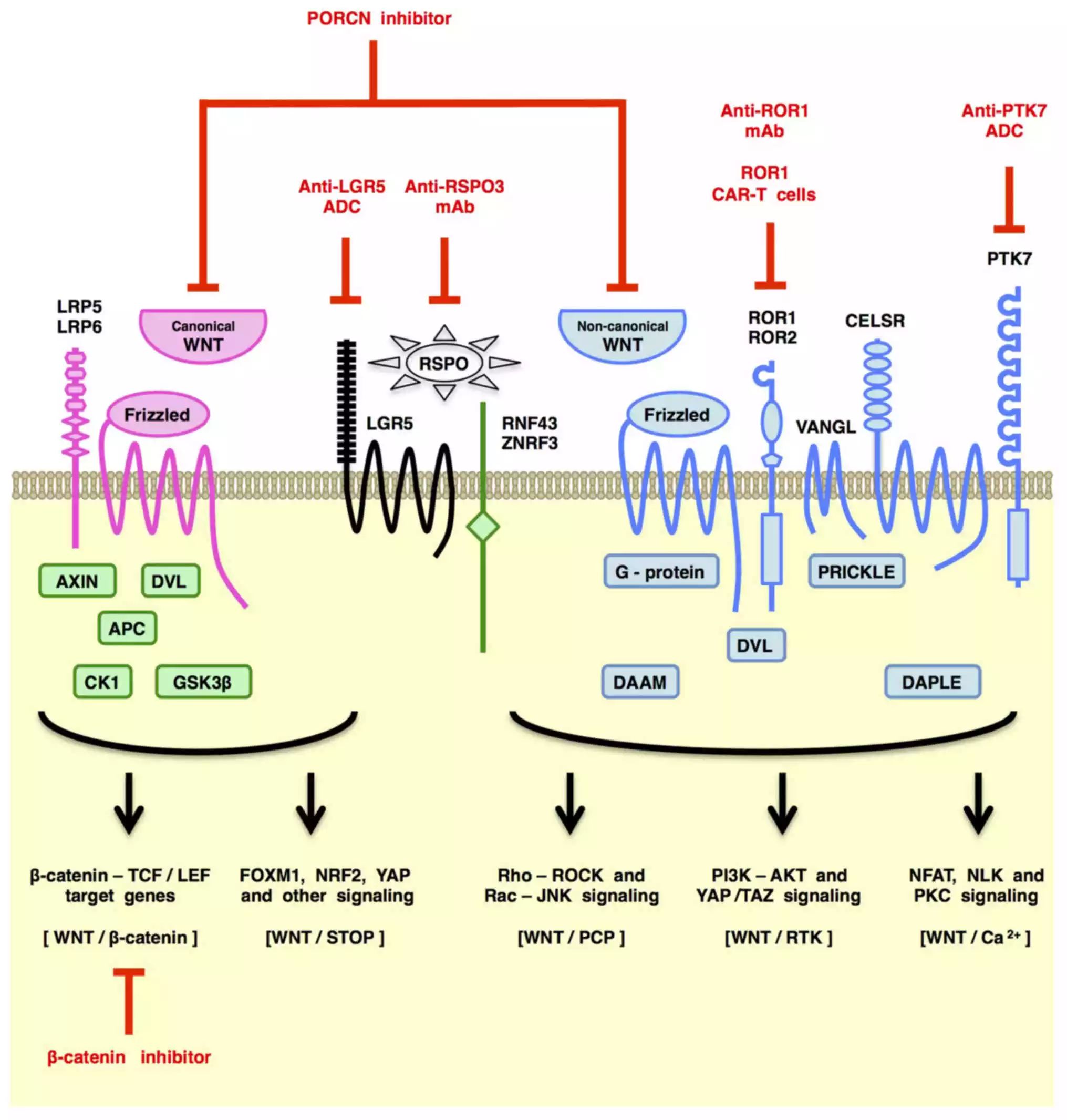
Importance of WNT pathway in development and disease
It is believed that the WNT Signaling pathway has a crucial function in the development of diseases in a variety of organisms, ranging from simple multicellular organisms to more complex mammals. The significance of this pathway lies in its role in regulating a variety of cell processes.
Here’s an overview of the importance of the WNT pathway in both development and diseases:
Importance in Development:
- Embryonic development: It is crucial for the development of embryos. It regulates crucial processes like the formation of the body axis organogenesis, and tissue patterning. In vertebrates, for instance, it is essential to the formation of neural tubes, the development of the limbs as well as the differentiation of organs.
- Tissue Regeneration: In adults the WNT pathway is involved in the process of tissue repair and regeneration. It aids in maintaining the health and function of various tissues, such as the skin, intestines, and the hematopoietic system.
- Stem Cell Regulation: WNT signaling plays a crucial role in maintaining and controlling stem cells within various tissues. It regulates self-renewal as well as the differentiation of stem cells which is crucial for the regeneration of tissues and for homeostasis.
- Cell fate determination: In the course of development the WNT pathway is involved in the cell’s fate that determines whether the cell will develop into a muscle cell, neuron, or another specific cell kind. This is essential to ensure the proper development of tissues.
- Synapse Formation: In the nervous system WNT pathways are involved in the development and maintenance of synapses, which are the neural connections that are vital for brain functioning and learning.
Importance in Disease:
- Cancer: Dysregulation of the WNT pathway is one of the main causes of various cancers. Uncontrolled activation in the Canonical WNT Pathway specifically causes uncontrolled growth of cells, which is a characteristic of cancer. In particular, it’s associated with colorectal cancer when mutations to APC or beta-catenin trigger the activation of the pathway.
- neurodevelopmental disorders: Changes within the pathway of WNT are linked to neurological disorders such as schizophrenia and autism spectrum disorders. The disruption of WNT signaling in brain development could affect the neural network and function.
- Bone Diseases: The WNT pathway is essential to bone homeostasis. The presence of dysregulation or mutations could result in conditions like osteoporosis as well as osteosarcoma.
- Inflammatory diseases: WNT signaling linked to inflammatory processes and the inability to regulate it can lead to chronic inflammation diseases like Crohn’s disease.
- Cardiovascular Diseases: Signaling by WNT plays a role in the development of cardiovascular disease. Dysregulation is a factor in conditions such as atherosclerosis and heart hypertrophy.
- Tissue Fibrosis: The abnormal WNT signaling is linked to tissue fibrosis. This is a disease-related scarring process that occurs in different organs, such as the lungs, liver, and kidneys.
Understanding the WNT pathway’s role in both disease and development is essential to improving our understanding of biology and developing targeted treatments.
Researchers are continuously looking at ways to alter the pathways for treating diseases or to enhance tissue regeneration, which makes it a topic of interest in both clinical and basic research.
Comparison Table of Canonical and Noncanonical WNT Pathway
Here’s a comparison table highlighting the key differences between the Canonical and Noncanonical WNT Pathways:
| Feature | Canonical WNT Pathway | Noncanonical WNT Pathway |
|---|---|---|
| Primary Outcome | Beta-catenin stabilization and TCF/LEF-dependent gene transcription | Various downstream signaling cascades, such as Planar Cell Polarity (PCP) and WNT/Ca2+ pathways |
| Ligand-Receptor Interaction | WNT ligands bind to Frizzled (FZD) receptors and LRP5/6 co-receptors | WNT ligands interact with Frizzled receptors, but LRP5/6 is less commonly involved |
| Beta-Catenin Regulation | Beta-catenin is stabilized and accumulates in the cytoplasm | Beta-catenin is not the central focus; it does not accumulate or translocate to the nucleus in most cases |
| Downstream Signaling Pathways | TCF/LEF-dependent gene transcription | Planar Cell Polarity (PCP) pathway and WNT/Ca2+ pathway |
| Physiological Roles | Embryonic development, tissue regeneration, tissue homeostasis | Tissue patterning, cell polarity, cell migration, immune response |
| Key Protein | Beta-catenin | Disheveled (DVL) protein |
| Regulation and Crosstalk | Regulated by WNT antagonists (e.g., DKK, SFRP), can interact with Noncanonical pathway | Interaction with Canonical pathway, regulation of beta-catenin levels |
| Dysregulation and Diseases | Dysregulation associated with various cancers (e.g., colorectal cancer) | Dysregulation associated with neurodevelopmental disorders, certain cancers, and other diseases |
This table provides a concise overview of the main differences between the Canonical and Noncanonical WNT Pathways in terms of their components, activation mechanisms, downstream signaling, physiological roles, and relevance in health and disease.
Dysregulation in diseases (e.g., colorectal cancer)
The dysregulation that occurs in the Canonical WNT Pathway is closely linked to a variety of diseases and cancers, including colorectal cancer is an example of one of the well-known instances.
Here’s a brief explanation of the way that the dysregulation of this pathway can contribute to the growth of cancers in the colorectal area:
Colorectal Cancer and Dysregulated Canonical WNT Pathway:
- Changes in APCAPC: In the majority of cancers colorectal mutations are found on the Adenomatous Polyposis Coli (APC) gene. APC is normally a component of the “destruction complex” in the Canonical WNT Pathway, helping to target beta-catenin’s degradation. Changes in APC cause the disappearance of its regulatory function and result in an accumulation of beta-catenin in the cytoplasm.
- Beta-Catenin Stabilization: In the case of APC impairment, beta-catenin builds up and is stabilized in the cytoplasm, instead of being destroyed. This results in an increased amount of beta-catenin that is available for transfer into the nucleus.
- Transcription: the nucleus of the cell, beta-catenin that is stabilized creates a complex with transcription factors from TCF/LEF, which leads to the stimulation of certain targeted genes. The target genes are often involved in cell proliferation, block angiogenesis, and inhibit apoptosis, and can contribute to the growth and progression of colorectal cancer.
- Tumor Growth and Progression: Beta-catenin signaling is dysregulated and causes the development of benign growths known as Adenomatous polyps within the colon. In time some of these polyps may develop into malignant tumors, leading to cancer of the colorectal.
- Metastasis: Dysregulated Canonical WNT Pathway may also aid in the metastasis of cancerous colorectal cells by enhancing their capacity to invade surrounding tissues and spread to distant locations within the body.
- Therapeutic targets: A dysregulated Canonical WNT pathway in colorectal cancer offers the potential for therapeutic targets. Researchers are investigating ways to block WNT signals in tumor cells, to prevent cancer growth and metastasis.
It’s important to remember that, while colorectal cancer is a notable instance, dysregulation of this Canonical WNT Pathway is implicated in other forms of cancers like hepatocellular cancer and medulloblastoma.
This highlights the importance of this pathway for oncogenesis. The study of and treatment of those who are dysregulated by the WNT pathway can be an exciting option for cancer treatment and research.
Downstream signaling pathways (Planar Cell Polarity and WNT/Ca2+)
The Noncanonical WNT Pathway includes many downstream signaling pathways one of them being those of the Planar Cell Polarity (PCP) pathway as well as the Ca2+/WNT pathway. These pathways play a crucial role in many cellular processes and differ from that of the Canonical WNT Pathway.
Here’s a summary of the two pathways:
Planar Cell Polarity (PCP) Pathway:
- cell polarity as well as tissue morphogenesis: The PCP pathway controls the emergence of cell polarity within the sphere of an organ or tissue. It plays an essential role in the process of tissue morphogenesis, ensuring that cells are properly aligned and polarized with respect to one another.
- The key components: The PCP pathway is characterized by interactions with diverse proteins, such as Frizzled (FZD) receptors Disheveled (DVL) protein, and PCP-specific essential proteins such as van Gogh (Vangl), Prickle, and Flamingo.
- Tissue Patterning: PCP signaling is especially important for processes such as neural tube closure in embryonic development, in which it assures correct alignment of the cells on an axis of anterior-posterior.
- Cilia function: In certain tissues, PCP signaling is connected to the function of cilia, hair-like structures that are found on the cells’ surface. Cilia are responsible for processing chemical and mechanical signals as well and the PCP pathway may affect their location and function.
- Disease Impacts: Dysregulation of the PCP pathway may cause developmental disorders such as neural tube defects as well as some kinds of deafness. It could also cause the spread of cancer and repair of tissue.
WNT/Ca2+ Pathway (Calcium Signaling Pathway):
- intracellular calcium levels: The WNT/Ca2+ pathway is involved in controlling intracellular calcium Ion (Ca2+) levels in response to the binding of WNT ligands onto Frizzled receptors.
- Frizzled receptors: The activation of certain Frizzled receptors could trigger downstream signaling via the mobilization of calcium Ions.
- Cell adhesion and migration: The WNT/Ca2+ pathway can be involved in various processes, including cell adhesion, cell movement, and the morphogenesis of tissues. It is involved in the actin cytoskeleton and may influence the cell’s mobility.
- Neural development: In the nerve system WNT/Ca2+ signals are essential for functions like axon-guided axons, which aid in directing the development of axons towards the cells they are targeting.
- Cancer and Disease: Dysregulation of the C2+ pathway may contribute to diverse diseases, such as neurodevelopmental disorders, cancer, and cardiac hypertrophy.
- Crosstalk with the Canonical Pathway: The reason for this is that there may be a cross-talk with the Ca2+/WNT path as well as the Canonical WNT Pathway and some of the elements being shared between both pathways.
Two Noncanonical pathways of WNT, namely the Planar Cell Polarity (PCP) pathway as well as the WNT/Ca2+ pathways, demonstrate the variety of the signaling mechanisms that are activated by WNT ligands even without beta-catenin stabilization as well as TCF/LEF-dependent transcription, which are the hallmarks for the Canonical WNT Pathway.
They play an important role in processes such as the development of tissue morphogenesis as well as cell migration and repair of tissues, as well as being involved in a variety of disorders and developmental diseases.
Regulation and crosstalk between pathways
The crosstalk and regulation of both the Canonical as well as Noncanonical WNT pathways are complex and play an important role in regulating cellular responses and ensuring that tissues are in a healthy state.
Here’s a brief overview of the control and crosstalk of these two pathways
Regulation of Canonical WNT Pathway:
- antagonists of WNT: The Canonical WNT pathway can be regulated by secreted antagonists such as the Dickkopf (DKK) proteins as well as Secreted Frizzled-Related Protamins (SFRPs). These antagonists bind WNT receptors or ligands and block their interaction with the Canonical pathway’s components hindering the stabilization of beta-catenin.
- Axin Regulation: Axin is a part of the degrading complex within the Canonical pathway, and may be targeted for degradation by a variety of mechanisms, such as phosphorylation and interplay with proteins. This may alter the activity of the degrading complex and consequently, the levels of beta-catenin.
- Ubiquitin-Mediated Decreasing: Beta-catenin degradation in the degradation complex controlled by proteolysis mediated by ubiquitin. The factors that affect the process of ubiquitination and degradation can affect the concentrations of beta-catenin.
Crosstalk Between Canonical and Noncanonical WNT Pathways:
- Beta-catenin Crosstalk: There could occur crosstalk with the Canonical and noncanonical pathways on the beta-catenin level. Certain components, for instance Disheveled (DVL) may interact with beta-catenin, influencing its stability and nuclear translocation, possibly affecting the Canonical pathway’s activity.
- The inhibition of the Canonical Pathway by a noncanonical path: In some contexts, the noncanonical WNT signaling could interfere with that Canonical pathway. For instance, the WNT/Ca2+ pathway could stimulate the protein kinase C (PKC) which can phosphorylate and inhibit LRP5/6 coreceptors and reduce the activity of the Canonical pathway.
- Cell-type-specific crosstalk: The form and degree of crosstalk between pathways may differ based on the type of cell or tissue type, as well as the developmental stage. Certain cells may choose to prefer one path over the other, based on their individual requirements.
- Tissue development and morphogenesis: The balance between Canonical and noncanonical pathways is essential for the development of tissue and the process of morphogenesis. PCP pathway, for instance. PCP path, for example, is able to influence the polarity of tissue and cell movements, in conjunction in conjunction with the Canonical pathway in embryonic development.
- Disease Impacts: The inability to regulate crosstalk between these pathways may be a cause of diseases. For instance, in the case of cancer, there are changes in the cells that mediate crosstalk causing uncontrolled growth and metastasis.
Understanding the complex control and interplay between Canonical and noncanonical WNT pathways is crucial for understanding their role in tissue homeostasis, development, and diseases. Researchers continue to research these interactions in order to identify possible therapeutic targets and gain insight into the mechanisms that control cellular responses.
Similarities Between Canonical and Noncanonical WNT Pathway
Although both the Canonical as well as the Noncanonical WNT Pathways are distinct and possess distinct downstream signaling pathways, However, there are some commonalities and overlaps between both pathways:
- WNT Ligands: Both pathways are activated by their binding frizzled (FZD) receptors. WNT ligands may stimulate simultaneously Canonical as well as Noncanonical channels according to the context of the cell and the particular FZD receptors that are involved.
- Frizzled receptors: Both pathways are based on an interaction of WNT ligands as well as Frizzled receptors. Frizzled receptors are crucial in facilitating WNT signaling within both pathways.
- Disheveled (DVL) Protein: Disheveled is an important intracellular protein that plays an important role in both Canonical and noncanonical pathways. For the Canonical pathway, DVL is involved in beta-catenin stabilization. In the Noncanonical pathway, it functions as a major mediator for downstream signaling.
- Control by WNT antagonists: Both pathways could be controlled by secreted antagonists, like the Dickkopf (DKK) proteins as well as Secreted Frizzled Related Proteins (SFRPs). They can block the signaling pathways in both through adhering to WNT-specific ligands and receptors.
- Cell-type specificity: The selection between Canonical and noncanonical signaling may differ based on the type of cell and the context of development. Some cells can be able to activate one pathway and block one of the others according to their individual requirements.
- Crosstalk: It is possible to have interactions and crosstalk between Canonical and Noncanonical pathways, in certain circumstances. For instance, certain components, such as Disheveled (DVL) may interact with beta-catenin, which can affect its stability and activities within the Canonical pathway. Furthermore, the WNT/Ca2+ pathway may block the Canonical pathway through phosphorylation of LRP5/6 co-receptors.
- Function in Development: Both pathways play crucial roles in the various stages of embryonic growth, patterning of tissues, and organogenesis. Although their role and their downstream effects are different they are both integral to the development process in general.
It is important to remember that, despite the similarities, both Canonical and Noncanonical pathways have distinct downstream signaling pathways as well as physiological functions and implications for the expression of genes.
The balance and interconnection of these pathways are closely controlled to ensure the proper cellular responses and development of tissue.
Reference Books
Certainly! Here are some reference books on a variety of topics that you might find useful:
- Biology:
- “Molecular Biology of the Cell” by Bruce Alberts, Alexander Johnson, Julian Lewis, David Morgan, Martin Raff, Keith Roberts, and Peter Walter.
- “Campbell Biology” by Jane B. Reece, Lisa A. Urry, Michael L. Cain, Steven A. Wasserman, Peter V. Minorsky, and Robert B. Jackson.
- Chemistry:
- “Chemical Principles” by Peter Atkins and Loretta Jones.
- “The Art of Writing Reasonable Organic Reaction Mechanisms” by Robert B. Grossman.
- Physics:
- “Fundamentals of Physics” by David Halliday, Robert Resnick, and Jearl Walker.
- “Classical Mechanics” by Herbert Goldstein, Charles P. Poole Jr., and John L. Safko.
- Mathematics:
- “Calculus” by James Stewart.
- “Linear Algebra and Its Applications” by David C. Lay, Steven R. Lay, and Judi J. McDonald.
- Computer Science:
- “Introduction to the Theory of Computation” by Michael Sipser.
- “Algorithms” by Robert Sedgewick and Kevin Wayne.
- Philosophy:
- “Meditations” by Marcus Aurelius.
- “Critique of Pure Reason” by Immanuel Kant.
- Psychology:
- “Psychology” by David G. Myers and C. Nathan DeWall.
- “Thinking, Fast and Slow” by Daniel Kahneman.
- History:
- “A People’s History of the United States” by Howard Zinn.
- “Guns, Germs, and Steel” by Jared Diamond.
Conclusion
Reference books are essential resources for all disciplines of study. They are well-crafted and provide vital information, insight, and direction for professionals, students, and even enthusiasts.
If you’re looking to dive into the deepest depths of science, examine the intricate world of literature, or seek out wisdom from the philosophy of mind, the appropriate reference book will be an invaluable companion for your journey to knowledge.
Be aware that your selection of books for reference must be in line with your particular desires and academic requirements and provide you with the resources to increase your knowledge and become a master in the area you’ve chosen to study.

